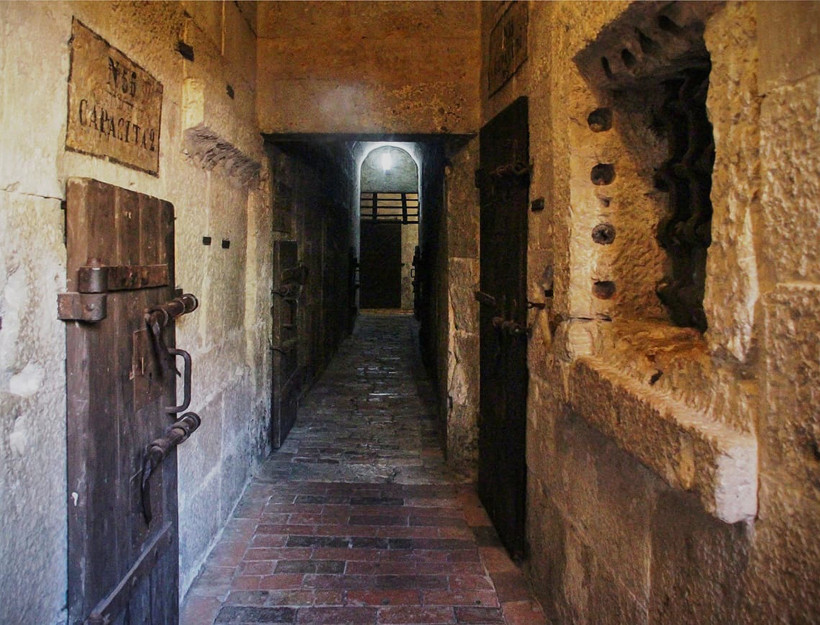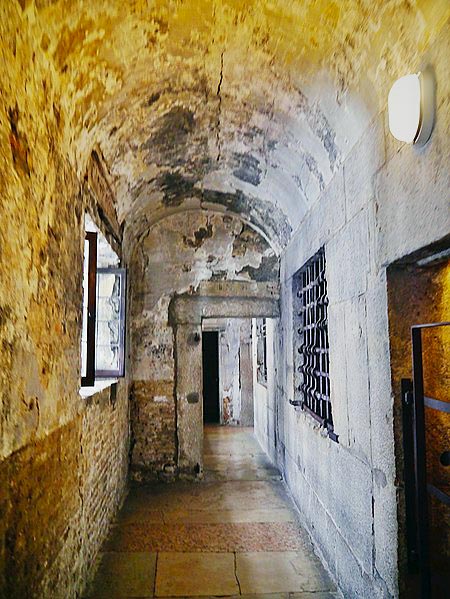The Doge’s Palace in Venice, Italy, is an architectural marvel and a symbol of the Venetian Republic’s power and artistry. Among its many historical features, one of the most intriguing is the 16th-century prison door of the Piombi, a unique prison situated beneath the palace’s lead-lined roof. This door, with its intricate design and craftsmanship, offers a fascinating look into the blending of functionality and artistic expression during the Renaissance.
A Prison Above the City: The Unique Location of the Piombi
Unlike most prisons of the era, which were typically situated underground, the Piombi was located in the attic of the Doge’s Palace. The name Piombi derives from the Italian word piombo, meaning lead, referencing the lead plates that lined the roof above the prison cells. This unique location provided extreme conditions—sweltering heat in the summer and frigid cold in the winter—making it both secure and challenging for its occupants.

The Artistic Details of the Prison Door
One of the standout features of the Piombi is its original prison door. Despite its utilitarian purpose, the door showcases the Renaissance commitment to craftsmanship. Made from sturdy wood reinforced with iron plates, the door features intricate ironwork, including deadbolt handles shaped like leaves. These delicate flourishes demonstrate that even in grim contexts like prisons, Venetian artisans did not compromise on beauty and detail.

The Structure of the Piombi: Security and Ingenuity
The Piombi consisted of six small cells, separated by wooden partitions strengthened with iron plates to ensure maximum security. Two staircases provided access to the prison: one from the Sala dei Tre Capi (Hall of the Three Chiefs) and the other from the Sala degli Inquisitori di Stato (Hall of the State Inquisitors). This layout reflects the interconnected nature of Venice’s administrative and judicial systems, as prisoners could be brought directly from interrogation rooms to their cells.

Notable Prisoners of the Piombi
Throughout its history, the Piombi housed numerous notable prisoners, including political dissidents, heretics, and individuals accused of crimes against the state. Two of its most famous inmates were:
- Giacomo Casanova: The infamous adventurer and writer, Casanova, was imprisoned in the Piombi in 1755 for heresy and libertinism. His dramatic escape in 1756, detailed in his autobiography The Story of My Life, is a tale of cunning and perseverance that has become legendary.

- Paolo Antonio Foscarini: A philosopher and scientist, Foscarini was imprisoned for supporting the controversial Copernican model of the solar system, which clashed with religious doctrines of the time. His case highlights the tension between science and orthodoxy in the Renaissance.

The Significance of the Piombi in Venetian History
The Piombi serves as more than just a historical prison. It represents Venice’s intricate balance of power, justice, and artistry. While the harsh conditions of the prison reflected the Republic’s emphasis on security, the detailed craftsmanship of its doors and ironwork underscores a deep respect for aesthetics, even in functional spaces.

Today, the Doge’s Palace stands as a testament to Venice’s rich history, and the Piombi offers visitors a unique perspective on the city’s blend of governance, culture, and artistry. The surviving prison door and its remarkable design continue to captivate those who seek to understand the complexities of Renaissance Venice.
Conclusion: A Legacy Preserved
The prison door of the Piombi is not just a relic of incarceration; it is a window into the values and ingenuity of the Venetian Republic. It exemplifies how art and practicality coexisted, even in the most unexpected places. Visiting the Doge’s Palace and witnessing this remarkable artifact allows us to step back in time and appreciate the enduring legacy of Venice’s golden age.

